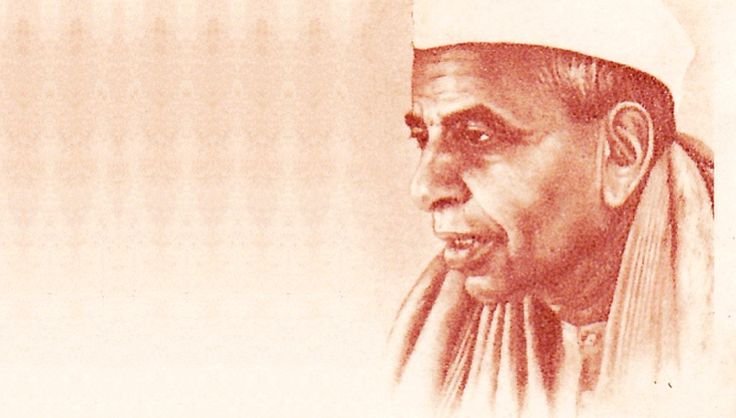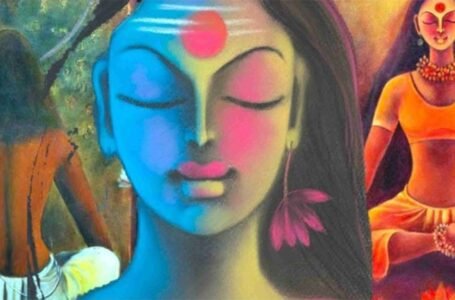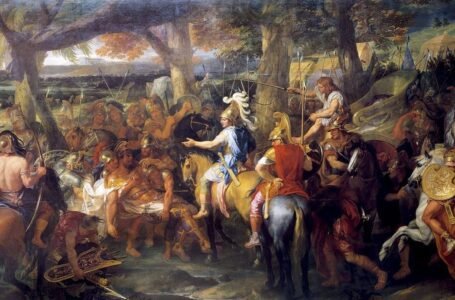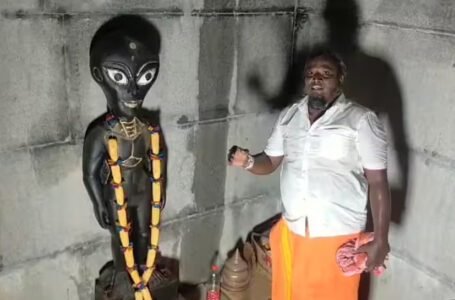Revolt and Resentment: The Voice of Hindi Poets

Poetry has been a tool of revolution and revolt for long, being the voice of the voiceless, a weapon to fight oppression, and a mirror to society’s deepest flaws. Hindi poetry, in specific, has been the key to forming political, social, and cultural discourse in India. From the fiery poetry of the nationalist poets in the freedom struggle to the modern-day poets questioning social injustice, Hindi poetry has never been free from the burden of revolt and indignation. This article discusses the revolutionary ethos of Hindi poets across the generations, their participation in political and social movements, and how poetry is a strong medium of dissent.
The Nationalist Movement and Hindi Poetry
Hindi poetry was used in the colonial period as a platform to raise voices of resistance against British occupation. Poets such as Ramdhari Singh Dinkar, Subhadra Kumari Chauhan, and Makhanlal Chaturvedi composed poems that sparked patriotism and motivated revolutionaries.
Ramdhari Singh Dinkar, often called the ‘Rashtrakavi’ (national poet), wrote “Sinhaasan Khaali Karo, Ke Janata Aati Hai” (Vacate the throne, for the people are coming). His poetry was infused with nationalistic zeal and called for action against tyranny.
Subhadra Kumari Chauhan’s famous poem “Jhansi Ki Rani” immortalized the bravery of Rani Lakshmibai, motivating countless Indians to rise against British rule.
Makhanlal Chaturvedi’s poem “Pushp Ki Abhilasha” (The Desire of a Flower) metaphorically expressed the longing of a patriot to sacrifice for the nation, resonating deeply with the freedom fighters.
These poets used their words as weapons, channeling the collective anger of the people and creating an emotional connection that fueled the independence movement.
Post-Independence Disillusionment
Once India became independent, the nationalist poets’ idealism gradually yielded to frustration and disillusionment. The newly independent country was still plagued by inequality, corruption, and social injustice. Poets started questioning the freedom and democracy promises that appeared to remain unfulfilled.
Agyeya (Sachchidananda Hirananda Vatsyayan) composed poems that captured the post-independence existential search and disillusionment. His modernist form deviated from conventions, reflecting the turbulence of a new but tormented nation.
Dhoomil (Sudama Pandey) was the most militant of voices during this time. His poetry, particularly in “Sansad Se Sadak Tak” (From Parliament to the Street), was an open assault on political corruption and hypocrisy. His lines expressed the rising anger among the masses who felt cheated by the ruling class.
The Nayi Kavita Movement and Social Revolt
In the mid-20th century, Hindi poetry underwent a transformation with the Nayi Kavita (New Poetry) movement. This movement rejected traditional themes and forms, focusing instead on the complexities of modern life, alienation, and individual struggles.
Muktibodh, a prime exponent of this movement, voiced great discontentment with the social and political status quo. His poem “Andhere Mein” (In the Dark), written in his unique, expansive style, is a forceful criticism of the capitalist-bureaucratic establishment that continued to keep the people downtrodden.
Raghuvir Sahay employed irony and satire in depicting the democratic system’s shortcomings. His poems commonly conveyed the plight of the ordinary man during periods of social and political upheaval.
The poets of this period were heavily invested in Marxist and socialist thought, and their poetry appealed to students, intellectuals, and activists who desired systemic transformation.
Dalit and Feminist Voices in Hindi Poetry
As Hindi poetry developed, it started incorporating varied and marginalized voices. Dalit and feminist poets became influential forces of social rebellion, upsetting the strongly entrenched caste and gender hierarchies.
Dalit writers such as Omprakash Valmiki and Rajesh Joshi put caste oppression center stage, ending the silence surrounding the lived experiences of Dalits in India. They used their poetry to highlight the hypocrisy of upper-caste progressivism and called for genuine social justice.
Feminist poets such as Mahadevi Verma, Anamika, and Savita Singh employed poetry to criticize patriarchy and women’s oppression. Mahadevi Verma’s poems, while frequently melancholic, had an undertone of resistance to societal norms curtailing women’s freedom. Anamika’s poems are strong and unapologetic, dealing with themes such as domestic violence, women’s agency, and identity.
These poets broadened the tradition of resistance in Hindi poetry, demonstrating that resistance was not political alone but also very intimate.
Modern-day Hindi Poets and Protest Poetry
Recent years have seen Hindi poetry regain its role as a vehicle for protest and dissent, especially against political authoritarianism, communal violence, and violations of human rights.
Writers such as Varun Grover, who is famous for his politically inspired poetry and lyrics, have employed social media platforms to engage a broader audience. His poem “Hum Kagaz Nahi Dikhayenge” (We Will Not Show Our Papers) was an anthem of defiance against discriminatory citizenship laws.
Hum Kaagaz Nahi Dikhayenge, Taana-Shah Aake Jayenge, Hum Kaagaz Nahi Dikhayenge, Tana-Shah Aake Jayenge, Hum Kaagaz Nahi Dikhayenge, Tum Aansu Gas Uchhaaloge, Tum Zehar Ki Chai Ubaaloge, Hum Pyar Ki Shakkar Gholke Isko, Gatt, Gatt, Gatt Pee Jayenge, Hum Kagaz Nahi Dikhayenge. Ye Desh Hi Apna Hasil Hai, Jahan Ram Prasad Bhi Bismil Hai, Mitti Ko Kaise Baantoge, Sabka Hi Khoon Toh Shaamil Hai, Yeh Desh Hi Apna Hasil Hai, Jahaan Ram Prasad Bhi Bismil Hai, Mitti Ko Kaise Bantoge, Sabka Hi Khoon Toh Shaamil haiTum Police Se Latth Padaa Doge, Tum Metro Band Kara Doge, Hum Paidal-Paidal Ayenge, Hum Kagaz Nahin Dikhayenge. Hum Manji Yahin Bichhayenge, Hum Kaagaz Naheen Dikhaayenge, Hum Sanwidhaan Ko Bachayenge, Hum Kaagaz Naheen Dikhaayenge, Hum Jan-Gan-Man Bhi Gayenge, Hum Kaagaz Nahin Dikhaayenge, Tum Jaat-Paat Se Baantoge, Hum Bhaat Maangte Jayenge, Hum Kagaz Nahin Dikhayenge….
Gyanendra Pati and Ashok Vajpeyi have followed the tradition of employing poetry to question state authority, raising questions such as freedom of speech and civil rights.
With the platforms of spoken word poetry, YouTube, and Instagram, a new generation of Hindi poets is keeping the flame of rebellion burning. Younger poets are writing about topics such as climate change, LGBTQ+ rights, caste violence, and religious intolerance, showing that poetry is still one of the most powerful forms of activism.
The Timeless Power of Hindi Poetry in Revolt
The Hindi poet’s voice has never been limited to artistic expression alone; it has been an incitement to action, a question of authority, and an image of society’s strife. Whether under colonial occupation, post-independence disillusionment, or modern social movements, Hindi poetry has been an ever-changing power of resistance and resentment.
Even now, poetry remains a tool of opposition and imagining a world better than this one. So long as there is injustice, the Hindi poet’s voice will ring down through the centuries—fearless, uncompromising, and unforgettable.
In modern times, this tradition continues as poetry blends with folk music and protest songs. The Naxalite movement in the 1960s and 70s saw the rise of revolutionary poetry in Hindi and regional languages, sung by peasants and laborers fighting against exploitation. Gaddar, a Telugu folk singer and poet, used poetry in his protest songs against state oppression, much like Gorakh Pandey, whose Hindi verses inspired communist and socialist movements.
Even today, artists like Varun Grover and Piyush Mishra bring poetry into mainstream music and cinema, making rebellion more accessible to the public. The fusion of poetry with street theatre, rap music, and folk traditions ensures that the voice of resistance continues to evolve and reach new audiences.
Conclusion
Hindi poetry, in all its movements and periods, has ever been more than mere words on paper; it has been a war zone of thought, feeling, and revolutions. From the patriotic poets who rebelled for liberty to the contemporary poets resisting inequality and dictatorship, their poems remain to motivate, stir, and fuel change. The revolt spirit and ire of Hindi poetry testify to the persistent power of language—language capable of shaking empires, defying authority, and rousing the conscience of a nation.In each age, poets have spoken truth to power, making sure that injustice is not ignored or forgotten. Whether in revolutionary slogans, protest songs, or contemporary spoken word performances, poetry is an eternal fire of revolt and anger. Even In the present day of censorship and suppression, it finds new means to break free—on the streets, on social media, in underground sessions—demonstrating that as long as oppression is there, poetry will be there.
Hindi poets’ voice is the voice of the masses—brave, unyielding, and unconquerable. It’s a reminder that words can inflame revolutions, upend systems, and redefine the future. And as long as there remain wrongs to be corrected, battles to be waged, and tales to be spoken, Hindi poetry will keep being the tongue of defiance and hope.


